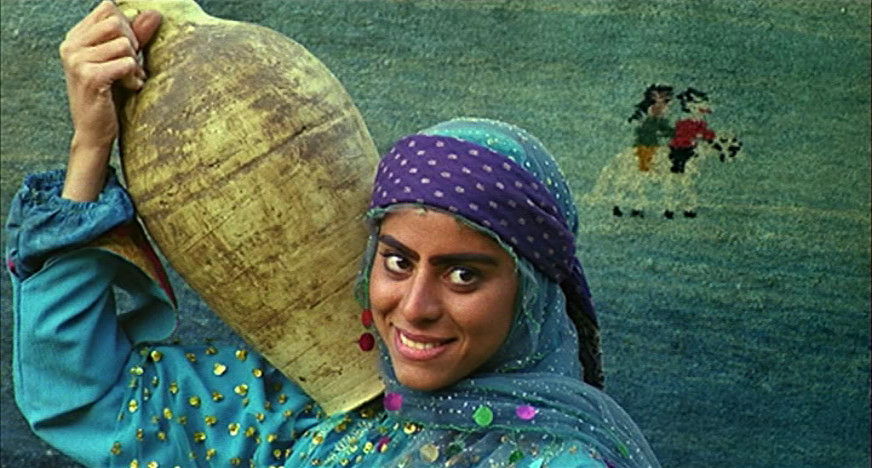
The cinema of any culture outside the Hollywood sphere of influence will naturally be very different from what western audiences are used to, from the methods of storytelling to the motivations for making a particular film. With a limited budget and, some would say, niche market appeal, filmmakers are often forced to adapt, and Iran is no exception.
A deeply expressive and mystical culture, its directors often have to contend with the restrictive nature of modern Iranian society: films produced under conditions imposed by the Ministry of Culture, productions halted or denied release to festivals.
It is no wonder then that the films that cross the gulf will offer something unique: new outlooks on life, stories of identity and individual freedom, contained within a visual language that has to supplement the spoken Farsi.
One of the most popular foreign cinemas around the world, Iran has enjoyed a recent surge of accolades and western recognition for its innovation and originality, with an aesthetic and cinematic style that differs greatly from what we are used to seeing. As visual works of art, they can both astound and evoke, and so here we count down the ten Iranian films we consider the most visually stunning.
1. Have You Another Apple? (Bayram Fazli, 2006)
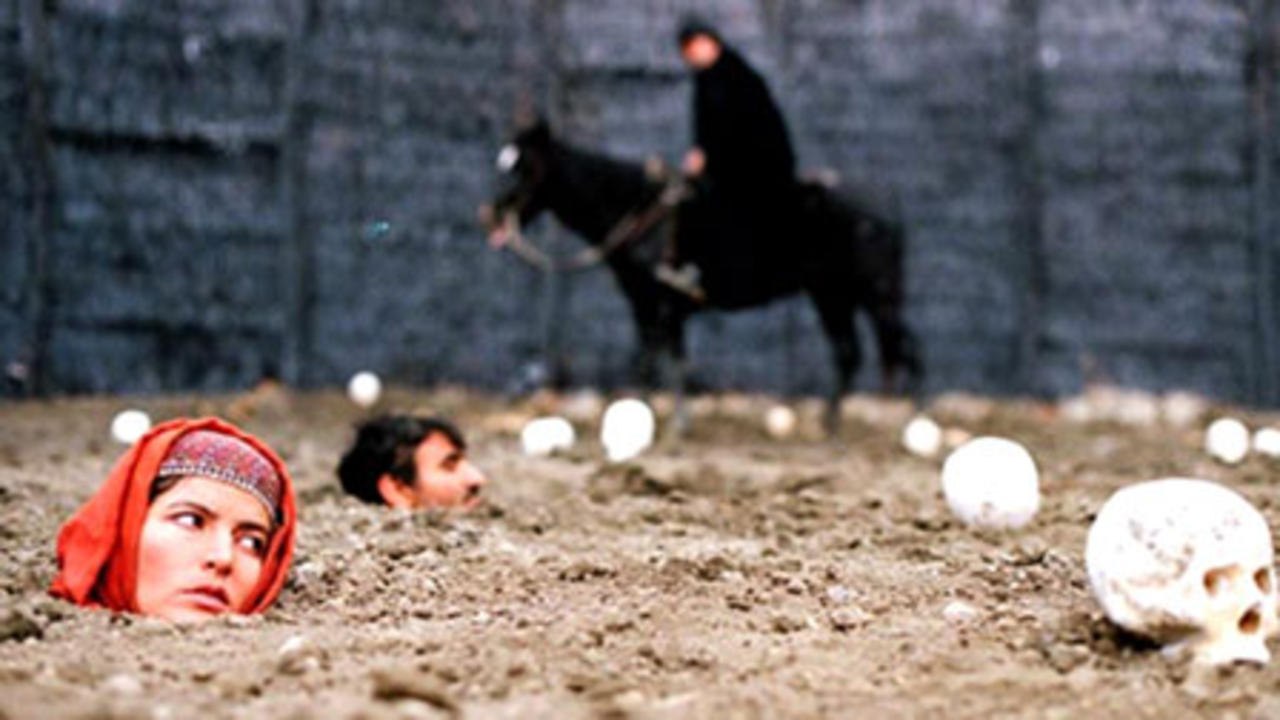
A surrealistic black comedy, Have You Another Apple takes place in an unspecified, dystopian land in which the ruling tribe, known as ‘The Sickle Bearers’, employs dangerous warriors known as Dasdaran to keep the oppressed masses in line. Subverting the traditional good versus evil underdog story, Bayram Fazli’s film is a brilliantly satirical attack on religion and man-made mythology.
Less tongue-in-cheek than you might expect, the film succeeds in the way it appears to take itself seriously, even while depicting some truly absurdist scenes. No expense has been spared in the costume and prop department, and the camera often pulls in close during action sequences to focus on these small details and add a sense of claustrophobic urgency.
Couple this with sprawling shots of the desert landscape and an almost binary colour palette, in which earthy pastel hues are contrasted with subdued, symbolic primary colours to create a starkness and a depth that wonderfully suits the narrative’s darkly comic, deadpan tone.
In its fundamentally human tale, complete with bumbling rent-a-hero played with much self-deprecation by Zabih Afshar, the film is bolstered by its sumptuous visual art style, and is granted a depth and complexity that goes beyond simply what you see on screen.
Visually striking and ambitious in intent, Have You Another Apple succeeds in capturing society’s opposing faces and bringing its bleak but fantastical world to life. A director of photography by trade, Fazli effortlessly transfers his skills to this feature debut, a work only surpassed by his own 2002 short ‘The Well’, which we also recommend checking out.
2. Unwished (Borzo Niknejad, 2015)
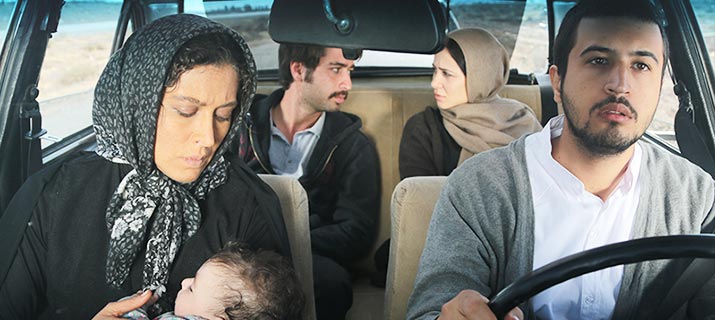
Subdued, moody lighting and an almost monochromatic colour wash set the tone for this next entry. A road movie of sorts, Unwished focuses on a young driver in Tehran whose life becomes inextricably intertwined with those of the people he picks up. As the group embark on a journey into the desert, the unfurling landscape reveals more and more about their past histories and innermost secrets in what amounts to a celebration of life itself.
A film that relies heavily on environment exposition, the majority of the action takes place in a moving vehicle, with the characters’ journeys outside themselves reflected in the passing landscape.
The close and personal cinematography within the cramped interior allows us to focus on the actors’ nuanced performances, with the interplay between light and shadow accentuating the passengers’ unveiling duality. Everything inside the car feels like reality, while outside, lingering landscape shots and a stark focus on topographical features lends a dreamlike quality to their passage through the desert.
Symbolic in the contrast between outside and inside the car, Unwished ultimately uses its cinematography to weave in layers of deeper meaning to the sense of place and narrative.
Through the simple act of sunlight reflected in a car’s windows, director Borzo Niknejad and cinematographer Masoud Salami hint at hidden worlds beneath the morose urban terrain: internal landscapes of hope and desire, and the freedom to forge one’s own destiny.
3. I Am Diego Maradona (Bahram Tavakoli, 2015)
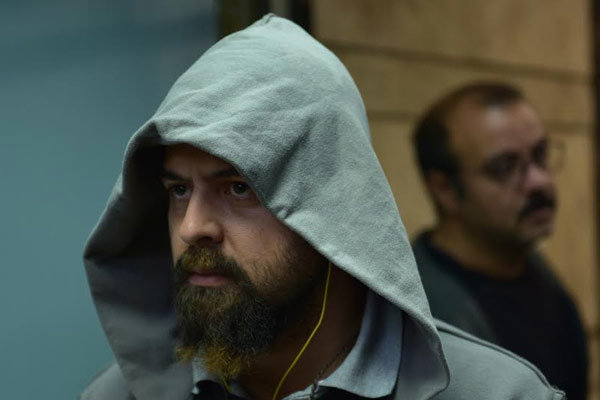
Quirky, colourful and stylised, I Am Diego Maradona seems at first reminiscent of the early works of Wes Anderson or the Coen Brothers. Daubed in vibrant colours and symmetrical long shots, this black comedy’s hyperactive pace, multi-layered plot line and episodic format could very easily align with the likes of The Grand Budapest Hotel or Barton Fink in its carefully chaotic story of simmering family tensions exacerbated by a stone and a broken window.
Using carefully placed scenery to frame its opposing family factions, director Bahram Tavakoli shows a masterful grasp of mise en scène as the story escalates into one of kidnapping and attempted murder.
The arrangement of the characters in the background and foreground, the distinction in the colour of their costumes (the women in rich primary hues, the men in shades of grey and taupe), all of it is intended to draw battle lines and highlight the interruptive schisms of this dysfunctional family.
Everything has an air of artistic composition to it, every frame resembling a garish but no less eye-catching painting in the visual equivalent of tongue-in-cheek that perfectly suits the black comedy genre.
With some sublime (and highly unusual) camerawork, I Am Diego Maradona succeeds in ensuring there is always something to keep your attention on screen. The dollhouse aesthetic, symmetrical cinematography and story-within-a-story format all are used to construct and populate a fully-realised world in which the narrative can play out.
And in its story of pride, insecurity and the competitive side of family dynamics, all capped with a playful sensibility, it manages to deliver substance to go along with its unassailable style.
4. There Are Things You Don’t Know (Fardin Saheb-Zamani, 2010)

Another film to contrast the exterior with the interior of a moving vehicle, Fardin Saheb-Zamani’s 2010 drama There Are Things You Don’t Know follows the working life of Ali, a taciturn, late-shift taxi driver in the mean streets of Tehran.
The flashing neon of the city lights as they pass by outside the window is juxtaposed with the more muted interior to underline the characters’ self-imposed imprisonment and hint at the veiled secrets that will later be unearthed when enigmatic passenger Leila forces Ali to finally break his stoic silence.
A film that seeks to unearth the traumas that have deflected these characters from their original paths in life, Houman Behmanesh’s intimate cinematography wonderfully frames the nuanced performances from Ali Mosaffa and Leila Hatami. The camera pulls in close to accentuate the pondering glances and the half-uttered sentences that betray their introspection, while outside the car, still-life shots depict a paucity of substantive meaning in keeping with the themes of unfulfilled potential.
The slow transitions from night to light elucidate the unravelling alienation and the increasing trust the characters place in each other. In this way, the environment becomes a personification of the characters’ struggle to be heard, the disquieting tone revealing the true difficulty of their introspection.
Haunting and evocative, There Are Things You Don’t Know is a mesmerising character study that captures the indecision and quiet desperation of people at a crossroads in their lives. Realistic performances are enhanced by tight cinematography that manages to be both melancholy and cautiously optimistic.
In planting us in the middle of these characters’ lives, we become passengers on the same journey, and the revelations when they come are shared with us the audience, forcing us to question our own perspectives on life and being.
5. A Cube of Sugar (Reza Mirkarimi, 2011)
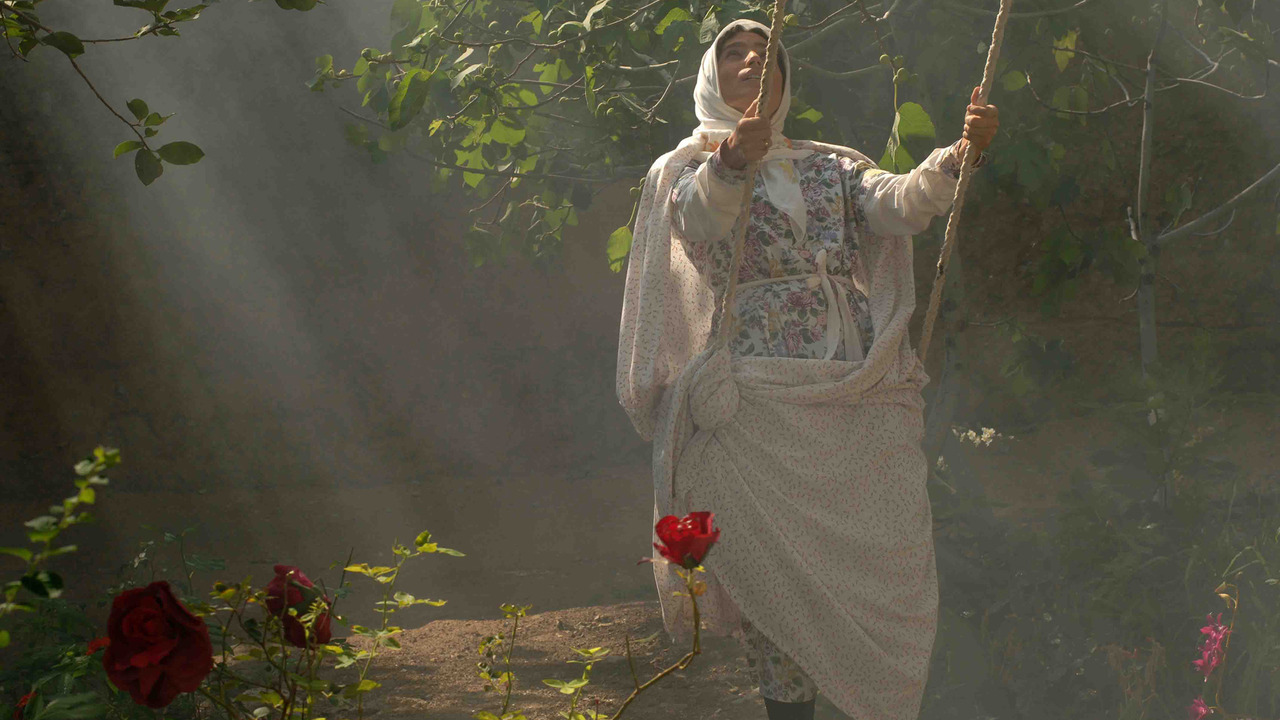
Waking dream sequences, a golden colour palette and engrossing celebration scenes cement this next entry on our list. Reza Mirkarimi’s hopeful drama A Cube Of Sugar explores themes of family, departure and unlikely treasures in its story of Pasandide, a fun-loving bride-to-be waiting to join her American husband in his native country.
A reunion of her relatives for the wedding ceremony starts as a jubilant affair; we share in the madcap antics of Hamid and Hormoz and their hunt for buried treasure, we follow the children as they play hide and seek, and witness the women discuss their hopes for the future.
These scenes are brightly lit, embossed with the golden hue of revelry and promise, and yet there is an element of the surreal to the interactions, as if viewed by Pasandide with some benevolent hindsight. Accentuated by comparison, director of photography Hamid Khozouie Abyaneh interweaves ethereal sequences of orchards and country fields, beautiful sprawls and intangible apple trees through which Pasandide seems to float, dream-like.
When she reaches for the fruit, it is as one seizing onto the promise of new life, the optimism her marriage has brought, in an entrancing visualisation of her deeper emotions. Simultaneously metaphorical and microcosmic, this fantastical quality is what gives the film its soul, a tangible depiction of illusive sensations.
Misfortune soon falls on the happy ceremony though, as a single cube of sugar proves the greatest downfall of one family’s best laid plans. Once again, a steady transition into a darker palette marks the sun going down on the celebrations, which until now have been attentively filmed and contemplatively plotted, creating little pockets of intrigue as the various parties weave their way through the interconnected rooms on their personal missions.
As the camera pushes in and follows the characters round corners, it creates a sense of movement and purpose which becomes increasingly more subdued as the film draws to a close. The overall effect becomes one of great fluidity, as the joyous festivities slowly turn into a party of mourning. Effective and beguiling, A Cube Of Sugar showcases one of Iran’s finest cinematographers at his very best.